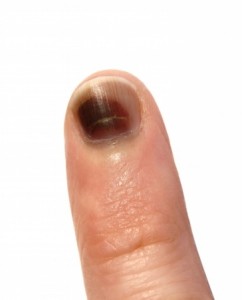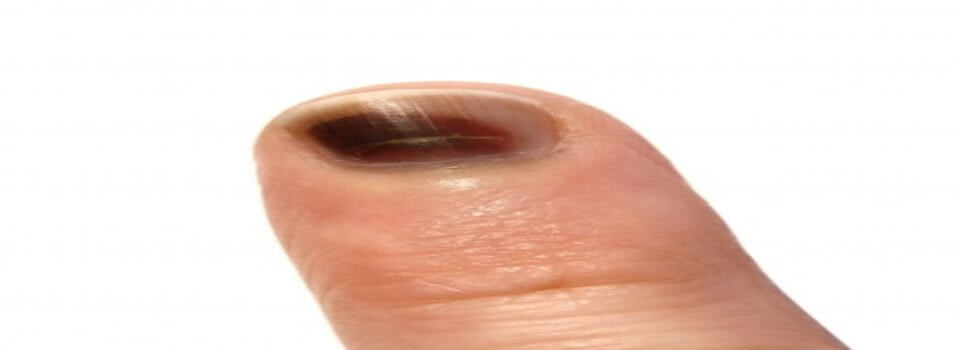 What is it?
What is it?
When injuries cause damage to the nail, damages to other nearby structures are often associated. It’s common to also see bone fractures, nail bed cuts, nerve ending damage, issues with the skin of the fingertip, or problems with the tendons that control finger movement.
What causes it?
Nail bed injuries are often the result of getting a fingertip caught in a door. These injuries can occur where there is any kind of crushing, pinching or cut to the nail bed.
What are the symptoms?
Blood will often collect beneath the nail in simple fingertip crushes. However, more significant injuries can cause the nail to crack into pieces or tear off.
How do we diagnose it?
In addition to a physical examination, it’s helpful to know the cause of the injury. X-rays are typically used to check for possible fractures that would require intervention. An injury to the nail bed may not be fully understood without the application of local anesthesia and close examination under magnification.
How is it treated?
We seek to repair the nail bed and surrounding area so that it might be restored to its normal appearance and function. In the case of hematomas (the blood that collects under the nail), drainage is performed through a small hole in the nail. It’s possible that bone fragments might require pinning or splinting if a fracture needs to be healed. When there are parts of the nail bed missing, we can graft skin from a healthy finger.
The end result of treatment depends on our ability to restore normal anatomy. In the best cases, the injury is sharp and can be easily repaired, resulting in a normal nail. However, there may be deformity or scarring in cases where more severe crushing has occurred. The health of the germinal matrix (the cuticle area at the base of the nail) will be one of the deciding factors in the final appearance of an injured nail bed. The normal functioning of the fingertip depends on the other structures around the nail. Typically a new nail can be grown in 3-6 months.


